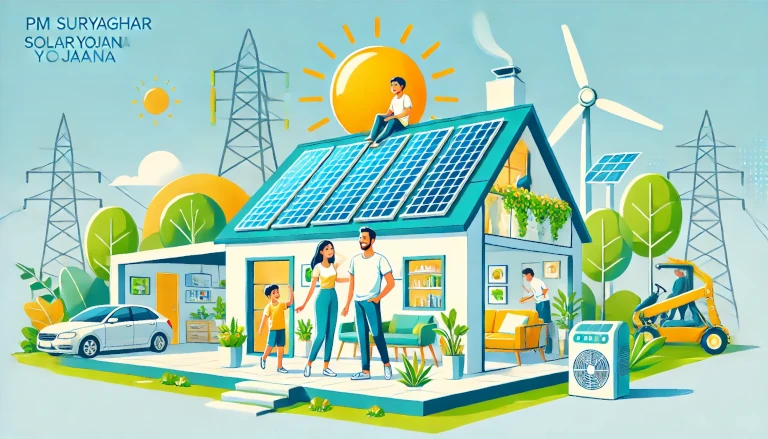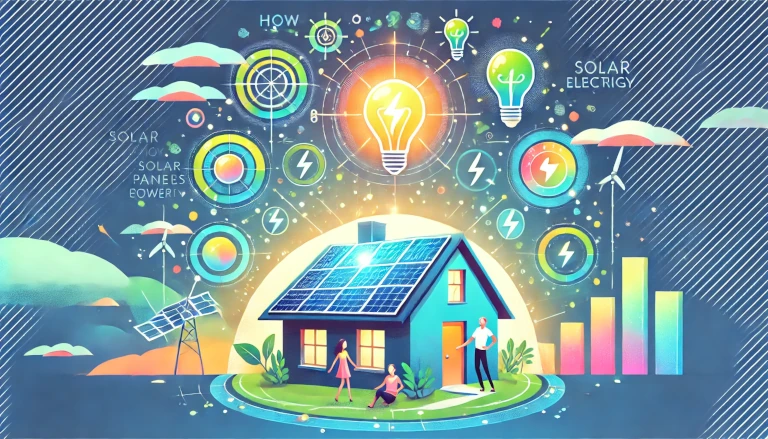The Solar Power Tree is an innovative approach to solar energy that addresses space constraints in urban environments. Developed as a compact and space-efficient solution, a solar power tree is designed to maximize solar energy capture in a limited area by mimicking the shape and branching structure of a tree. With solar panels mounted on metal branches, it allows multiple panels to fit in a small space, similar to leaves on a tree that capture sunlight. This sustainable structure brings the benefits of solar energy closer to urban and residential areas where space is limited.
What is a Solar Power Tree? 🌿
A solar power tree is a vertical installation of solar panels designed to resemble a tree, with “branches” that hold solar panels. Unlike traditional solar panels, which require a large area for installation, the vertical design of the solar power tree allows it to use minimal ground space while maximizing sunlight capture. This unique structure makes it ideal for cities, residential spaces, and small areas where conventional solar arrays might not be feasible.
Why Use a Solar Power Tree? 💡
In densely populated urban areas, land scarcity is a significant challenge for solar energy adoption. Solar power trees provide an effective solution, offering an eco-friendly way to generate energy without occupying large ground space.
Key Benefits:
- Space Efficiency: Requires only 10-15% of the land area used by traditional solar setups.
- Increased Sunlight Exposure: The height and structure help capture more sunlight, especially during early morning and late afternoon.
- Aesthetic Appeal: Adds visual appeal to spaces while serving a functional purpose.
How Does a Solar Power Tree Work? ⚙️
The solar power tree functions similarly to a traditional solar panel system. The “branches” of the tree are designed to hold solar panels at different angles, capturing maximum sunlight throughout the day. These panels convert sunlight into electricity through photovoltaic cells, and the energy is then directed to an inverter to power various appliances. The unique design allows the solar power tree to track sunlight more effectively than flat installations, making it efficient even in areas with partial shading.
Working Process:
- Sunlight Absorption: Solar panels on each branch capture sunlight and convert it into DC electricity.
- Energy Conversion: The electricity passes through an inverter, converting DC into usable AC power.
- Storage or Usage: The electricity can either be used directly or stored in batteries for later use.
Where Can Solar Power Trees Be Installed? 🏙️
Solar power trees are versatile and can be installed in a variety of locations where space is at a premium:
- Urban Areas: Parks, rooftops, and public spaces where conventional solar panels may be challenging to fit.
- Residential Spaces: Ideal for home gardens and rooftops to supply household energy needs.
- Industrial Facilities: Small land footprint makes them suitable for industrial sites with space constraints.
- Educational Institutions: Many schools and colleges use them as educational tools while generating green energy.
When Should You Consider a Solar Power Tree? 🕒
A solar power tree is ideal in situations where space is limited but there is sufficient sunlight. It is especially useful for residential or commercial properties that aim to increase renewable energy use but lack the space for traditional solar setups. Solar power trees are also advantageous in environmentally conscious communities or educational institutions focused on promoting green practices.
How Much Does a Solar Power Tree Cost? 💸
The cost of installing a solar power tree depends on several factors, including the number of panels, material, and installation complexity. Typically, a solar power tree can range between INR 50,000 to 200,000 for smaller residential installations, while larger commercial setups may cost more. Although the initial costs are higher than ground-mounted panels, the benefits of efficient land use and higher energy generation make it a valuable investment.
Cost Breakdown:
- Panels and Structure: The panels, support structure, and mounting equipment account for a significant part of the cost.
- Installation: Installation requires skilled labor to ensure the tree is structurally sound and positioned for optimal sunlight capture.
- Maintenance: Periodic cleaning and maintenance are essential to ensure maximum efficiency but incur additional costs.
Advantages of Solar Power Trees 🌞🌿
- Space Optimization: Perfect for urban areas where land is limited, making solar power accessible to more people.
- Increased Efficiency: The elevated design allows panels to capture sunlight throughout the day, even during morning and evening hours.
- Eco-Friendly: Reduces dependency on fossil fuels, lowering the carbon footprint and supporting a cleaner environment.
- Educational Value: Serves as a symbol of renewable energy and is often used in educational setups to promote environmental awareness.
Disadvantages of Solar Power Trees 🌧️⚠️
- High Initial Cost: Installation can be more expensive than traditional solar panels due to the unique structure and engineering required.
- Maintenance Needs: Regular cleaning and maintenance are necessary to keep the panels efficient, as dust and bird droppings may accumulate.
- Weather Dependency: Efficiency may reduce in cloudy or shaded areas, making it less effective in regions with low sunlight exposure.
Examples of Solar Power Tree Installations 🌍
Many countries and organizations have adopted solar power trees as an alternative solution to generate solar energy efficiently.
- India: The Council of Scientific and Industrial Research (CSIR) and the Central Mechanical Engineering Research Institute (CMERI) pioneered solar trees in India. They have been installed in cities and rural areas to promote sustainable energy.
- United States: Solar trees are used in eco-parks, university campuses, and city spaces to provide both energy and an aesthetic attraction.
- Germany: Known for its innovative solar initiatives, Germany has installed solar trees in urban areas to promote renewable energy within city limits.
Why Solar Power Trees Are the Future of Urban Solar Energy 🌍💡
The solar power tree is an innovative solution that helps meet the energy demands of urban areas while conserving valuable land resources. With its unique design, efficient energy production, and environmental benefits, it is a promising technology for cities and communities committed to sustainability. Although the initial investment is high, the long-term savings in energy costs and the positive environmental impact make it a worthwhile addition to any energy-conscious space.
A solar power tree offers a sustainable, efficient solution for urban spaces, delivering renewable energy in a compact design, ideal for cities with limited space. 🌞
Read this in Marathi at सोलर पॉवर ट्री: सौर ऊर्जा मिळवण्याची अभिनव पद्धत
Discover more from Green Ecosystem - Renewable Energy, Agriculture, and Environmental Sustainability
Subscribe to get the latest posts sent to your email.


